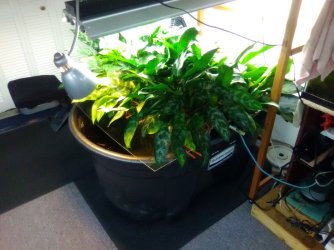PygmyPepperJulli
Fish Crazy
Hi all,
(sorry mods if this is in the wrong spot, wasn't sure where to put it)
Just wondering whether anyone here does no water changes, or very few? Accidentally stumbled upon a Father Fish video today (I'd heard of him, but never watched) and while what he said did make sense about nature and no wc, I also understand and practice the other more accepted point of view (wc are important etc.) As I'm setting up a new tank currently (well, fixing it, but I'll get there) was wondering whether to try this method and see how it goes.
The method- basically, never water change, stuff your tank full of plants, get a bunch of leaves and stick etc from the local creek, stuff them in the water, done. Also, never feed your fish because the live organisms from the leaves and sticks and stuff will feed them.
Was just curious to see if anyone had any opinions/success about this method.
Link to the vid (does this contest with rule no. 5? I've broken that one before by accident, so if this is a problem really sorry).
EDIT- and if not this Father Fish method, if putting lots of nitrate absorbing plants in a tank anyway, do you still need to do large wc?
(sorry mods if this is in the wrong spot, wasn't sure where to put it)
Just wondering whether anyone here does no water changes, or very few? Accidentally stumbled upon a Father Fish video today (I'd heard of him, but never watched) and while what he said did make sense about nature and no wc, I also understand and practice the other more accepted point of view (wc are important etc.) As I'm setting up a new tank currently (well, fixing it, but I'll get there) was wondering whether to try this method and see how it goes.
The method- basically, never water change, stuff your tank full of plants, get a bunch of leaves and stick etc from the local creek, stuff them in the water, done. Also, never feed your fish because the live organisms from the leaves and sticks and stuff will feed them.
Was just curious to see if anyone had any opinions/success about this method.
Link to the vid (does this contest with rule no. 5? I've broken that one before by accident, so if this is a problem really sorry).
EDIT- and if not this Father Fish method, if putting lots of nitrate absorbing plants in a tank anyway, do you still need to do large wc?
Last edited:


